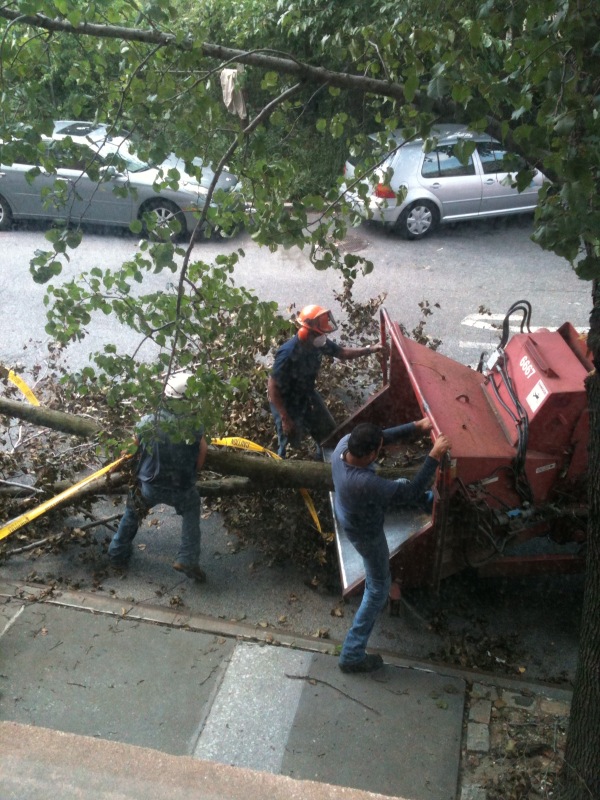A BHB tipster sends us this photo of the downed tree on Hicks Street we mentioned yesterday being thrown into a woodchipper. Rest well great tree, we hardly knew ye.
Fallen Tree on Hicks Now Sawdust
Connect with BHB
Related Posts:
- Atlantic Avenue Safety Improvements Finally Coming, Thanks to Advocates and Electeds
- Free Concert at Brooklyn Bridge Park – Rhapsody for This Land: The American Odyssey – Sat. July 27th at 6 pm
- Does Brooklyn Heights Have a Record for Sidewalk Shed Duration?
- “Movies With A View” Starts Tomorrow Evening With “Past Lives”
- L&B Spumoni Gardens May Open on Old Fulton in September
- nabeguy
- AAR
- MRG6726
- Cranberry Beret
- JOHN
- MRG6726
- nabeguy
- BevD
- Cranberry Beret
Nabe Chatter
- Crossing Guard on Open Thread Wednesday
- Arch Stanton on Open Thread Wednesday
- Alex on Open Thread Wednesday
- MaggieO on Open Thread Wednesday
- T.K. Small on Open Thread Wednesday
- Arch Stanton on Does Brooklyn Heights Have a Record for Sidewalk Shed Duration?
- Arch Stanton on Open Thread Wednesday
- Alex on Open Thread Wednesday
- nystrele on Does Brooklyn Heights Have a Record for Sidewalk Shed Duration?
- Red Leader on Open Thread Wednesday
Latest Stories
- Subway Service Alerts: Brooklyn Heights and Nearby
- Atlantic Avenue Safety Improvements Finally Coming, Thanks to Advocates and Electeds
- Open Thread Wednesday
- Free Concert at Brooklyn Bridge Park – Rhapsody for This Land: The American Odyssey – Sat. July 27th at 6 pm
- Does Brooklyn Heights Have a Record for Sidewalk Shed Duration?
Support BHB
Buy essential books about Brooklyn Heights here.
Buy all your favorite AMAZON products via the BHB Store. Click here to get started.
Buy all your favorite AMAZON products via the BHB Store. Click here to get started.
News Tips
If you have a Brooklyn Heights news tip let us know. Click here to send us an e-mail.



